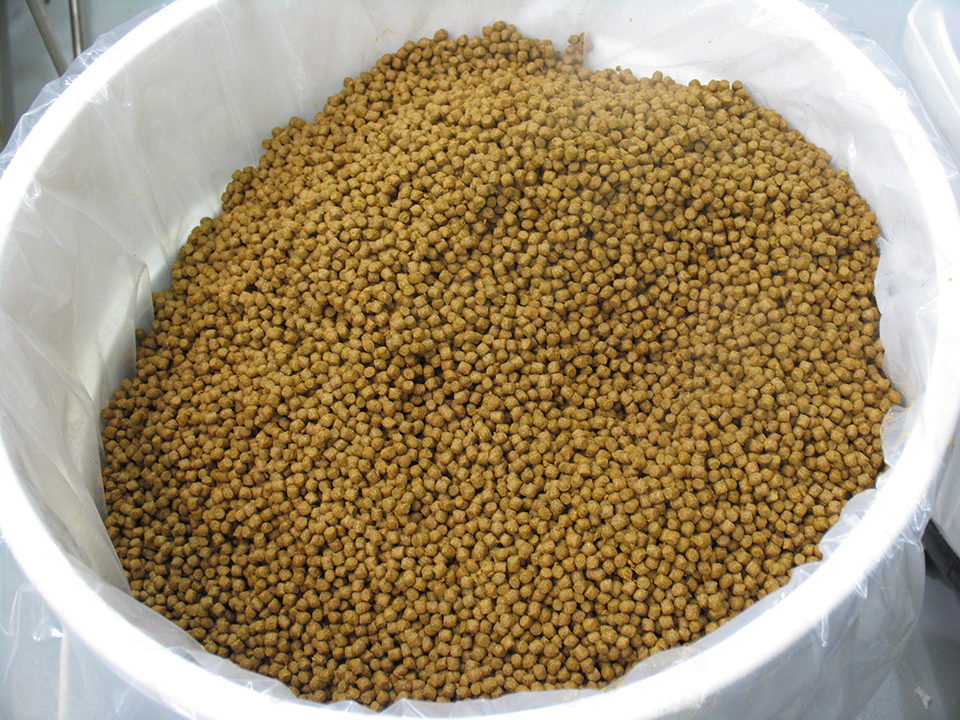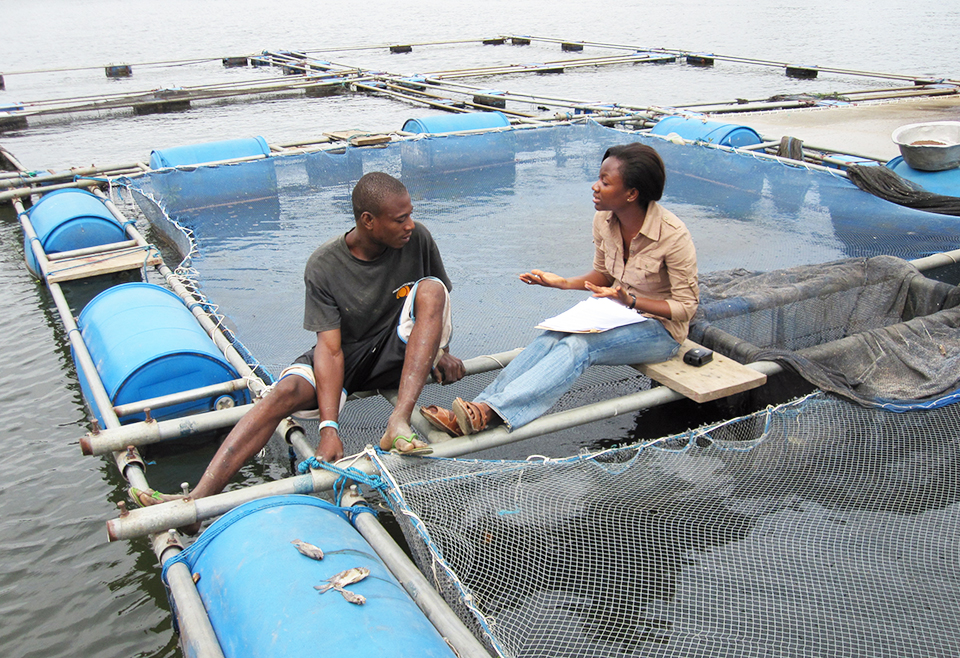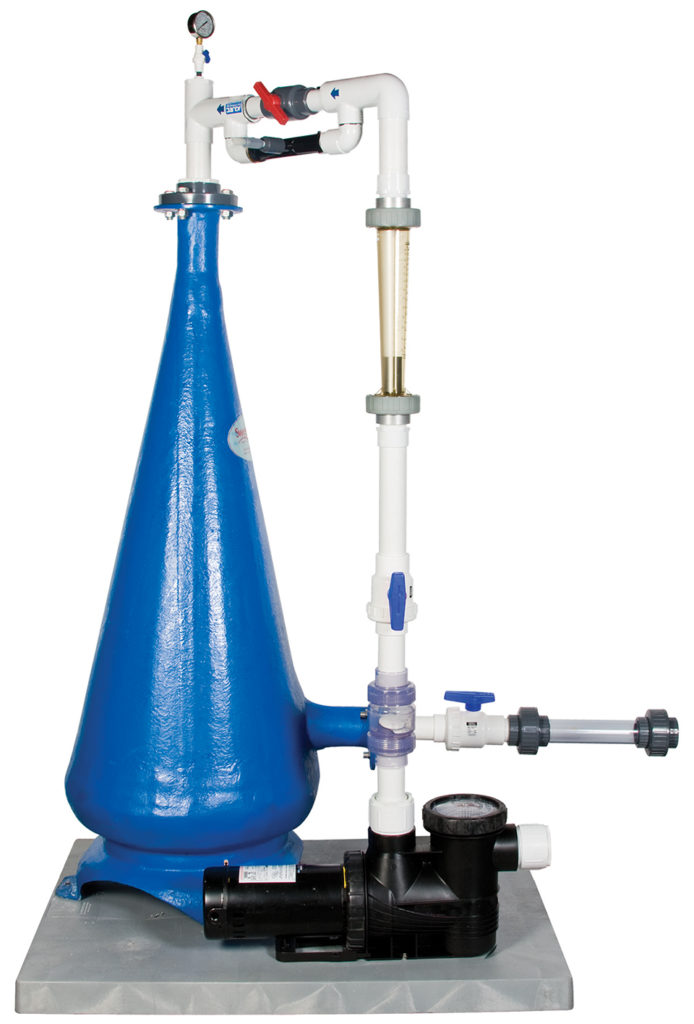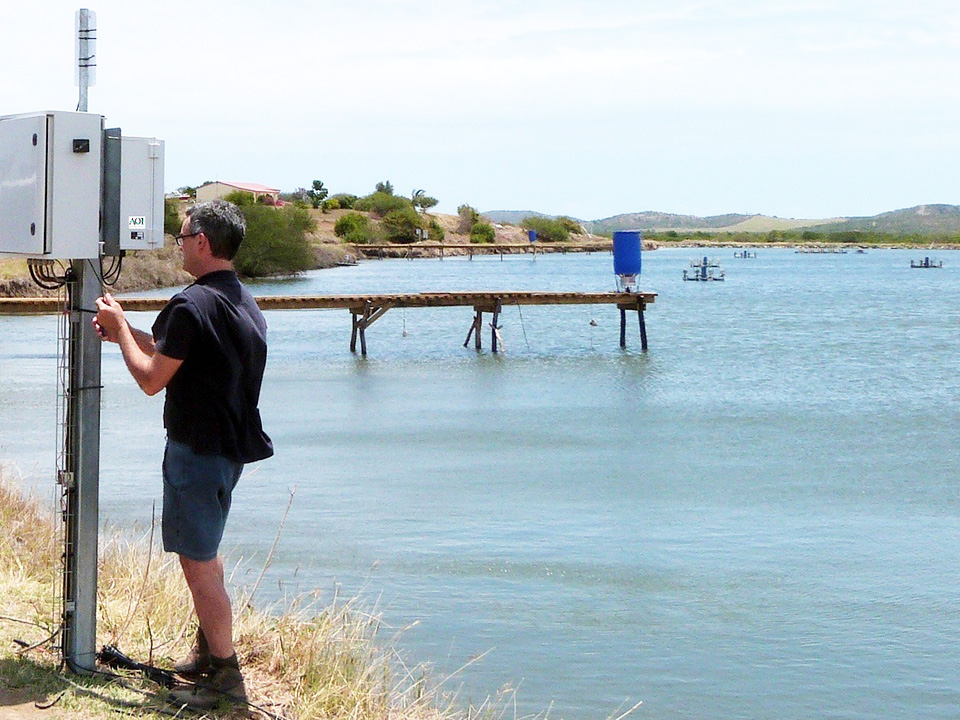Aquaculture may soon account for 10 percent of global feed tonnage

Aquaculture is steadily advancing as a major species sector in the global feed production, according to a recent survey conducted by Alltech, a top-10 global animal health and nutrition company with employees in 128 countries.
Alltech assessed feed tonnage in 134 countries worldwide through its annual Global Feed Survey during December 2012. Results from the survey showed the world is producing 954 million metric tons (MT) of feed, a 9 percent increase in production from the 873 million MT the survey counted in 2011. Alltech collects information for the Global Feed Survey in partnership with local feed associations and its more than 500-member sales team, which visits more than 26,000 feed mills annually.
Aquafeed production
The survey found that aquaculture feed production rose 16 percent in 2012, accounting for 34 million MT of the global total and affirming its position as the fastest-growing species sector (Table 1). Ruminant and poultry sectors remained the top feed producers by a wide margin, with poultry accounting for 44 percent of worldwide feed production.
Connolly, Global feed production, Table 1
| Sector | Production Volume |
|---|
Sector | Production Volume |
|---|---|
| Poultry | 418 mmt |
| Ruminants | 253 mmt |
| Swine | 218 mmt |
| Aquaculture | 34 mmt |
| Pet Food | 20 mmt |
| Equine | 11 mmt |
| Total | 954 mmt |
Table 1. Global feed production by sector, 2012.
However, survey information suggested that aquaculture feed growth may increase by as much as 8 percent in the coming year, with the potential to account for 10 percent of global feed tonnage in the next few years. Barriers to growth for aquaculture feed tonnage include resistance of hatcheries to use fishmeal, which contributes the beneficial omega-3 fatty acid docosahexaenoic acid (DHA) necessary for eventual human consumption.
Algae potential
A viable substitute for fishmeal and renewable energy resource, algae can be fed to fish to achieve healthy levels of DHA. Currently, Alltech operates one of the world’s largest algae plants in Winchester, Kentucky, USA. Alltech research teams have developed a program that uses the company’s core technologies of solid-state fermentation to produce strains of algae containing high levels of vitamins, antioxidants and fatty acids that allow fisheries to reduce feed costs and maintain the quality of their products.
Top producers
Among other highlights from the global survey, China was reaffirmed as the chief producer of feed, at 198 million MT and an estimated 10,000 feed mills. Consistent with late-2011 assessments, the United States followed China with 168 million MT produced by 5,251 feed mills. Brazil ranked as the third-highest producer with 66 million MT from its 1,237 feed mills. Overall, a 33-million MT increase was observed for the countries of Brazil, Russia, India and China year to date.
Asia continued to be the world’s leading producing region at more than 356 million MT annually. However, Africa exceeded Asia in percentage growth over 2011 results, increasing its tonnage nearly 19 percent from 47 million MT in 2011 to 56 million MT in 2012.
Globally, the survey identified 26,240 feed mills, with North America and Europe serving as home to more than half of them. The Middle East was estimated to have the largest feed mills, with an average of more than 66,000 MT produced per mill. Sixty percent of the feed produced globally was pelleted, with percentages particularly high in Europe.
Other animal feed sectors
When analyzed by species, the survey gathered the following results in other species sectors:
Poultry
Poultry continued to dominate with a 44 percent share of the feed market at 418 mmt, likely due to religious and taste preferences, as well as cost. Sixty percent of all poultry feed tonnage was dedicated to broilers, with the rest fed to egg layers, turkeys, ducks and other fowl.
Swine
The swine feed sector matched poultry’s 8 percent growth, moving to 218 million MT globally.
Ruminants
The ruminant feed market, comprising dairy, beef and small ruminants, grew more than 13 percent between late 2011 and December 2012, and now requires 253 million MT annually.
Equine
The feed tonnage produced for equine animals increased almost 17 percent to 11 million MT.
Pet food
The pet food sector represented 20.5 million MT of feed production, 40 percent of which was produced in the United States, but Brazil continued to make considerable advances in this sector.
Perspectives
Global feed production has traditionally been difficult to quantify because many countries lack a national feed association. For this reason, Alltech began in late 2011 to leverage its global presence to obtain a finer estimate of the world’s feed tonnage.
The 2013 publication of the annual year-end assessment by Alltech was released as an industry outlook resource that will hopefully allow governments, non-governmental organizations and the greater public to appreciate the value the feed industry is generating globally.
At the request of the United Nations to develop more information on global feed production, results of the 2012 Alltech Global Feed Survey were presented at a joint meeting of the International Feed Industry Federation and the Food and Agriculture Organization in October 2012.
Editor’s Note: A summary of the 2013 Alltech Global Feed Survey findings, including graphs, can be downloaded at www.alltech.com/sites/default/files/2013-feed-tonnage-report.pdf.
(Editor’s Note: This article was originally published in the March/April 2013 print edition of the Global Aquaculture Advocate.)
Now that you've reached the end of the article ...
… please consider supporting GSA’s mission to advance responsible seafood practices through education, advocacy and third-party assurances. The Advocate aims to document the evolution of responsible seafood practices and share the expansive knowledge of our vast network of contributors.
By becoming a Global Seafood Alliance member, you’re ensuring that all of the pre-competitive work we do through member benefits, resources and events can continue. Individual membership costs just $50 a year.
Not a GSA member? Join us.
Author
-

Aidan Connolly
Vice President
Alltech
3031 Catnip Hill Pike
Nicholasville, Kentucky 40356 USA
Tagged With
Related Posts

Health & Welfare
A holistic management approach to EMS
Early Mortality Syndrome has devastated farmed shrimp in Asia and Latin America. With better understanding of the pathogen and the development and improvement of novel strategies, shrimp farmers are now able to better manage the disease.

Health & Welfare
A look at tilapia aquaculture in Ghana
Aquaculture in Ghana has overcome its historic fits and starts and is helping to narrow the gap between domestic seafood production and consumption. Production is based on Nile tilapia.

Responsibility
A look at unit processes in RAS systems
The ability to maintain adequate oxygen levels can be a limiting factor in carrying capacities for RAS. The amount of oxygen required is largely dictated by the feed rate and length of time waste solids remain within the systems.

Innovation & Investment
Acoustic control improves feeding productivity at shrimp farms
In systems recently developed for shrimp farms, passive acoustic-based technology enables sensor-based control of multiple automatic feeders. Improved growth and feed conversion have been recorded at commercial farms using the technology.


